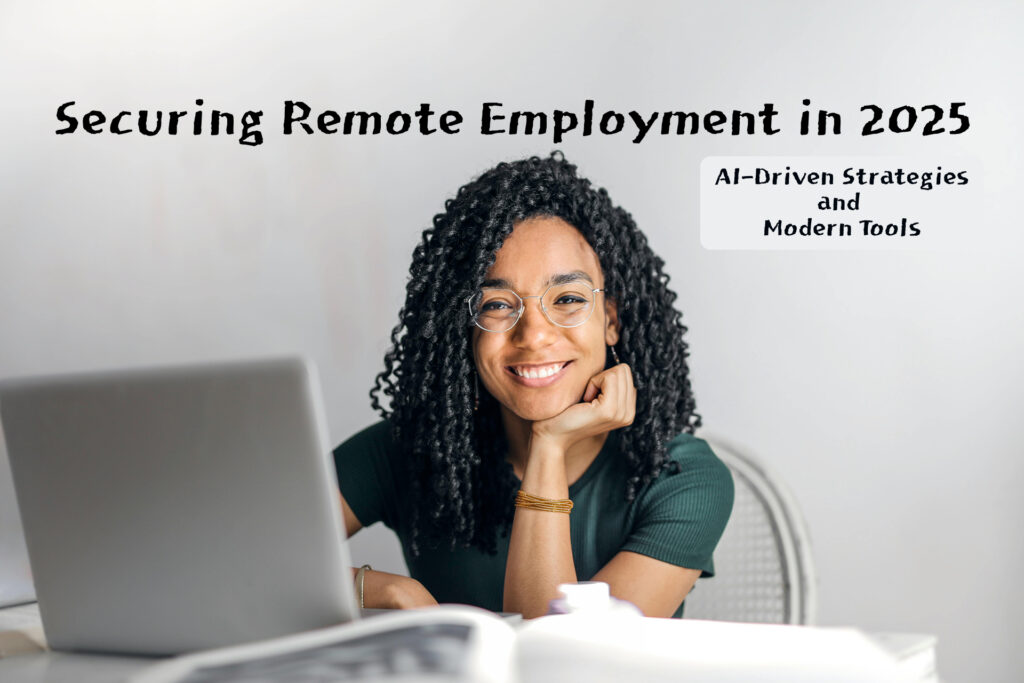In 2025, the U.S. job market has evolved into a battlefield where candidates must navigate AI-driven hiring systems, shifting employer priorities, and an influx of applicants vying for fewer roles. With employers leveraging advanced tools like predictive hiring algorithms and sentiment-analysis software, a resume is no longer just a summary of your career—it’s a strategic document engineered to outsmart automation and resonate with human decision-makers. Below, we break down the critical strategies to craft a resume that thrives in this high-stakes environment.
1. ATS Optimization: Decoding the Algorithm Gatekeeper
Applicant Tracking Systems (ATS) remain the first hurdle, rejecting up to 75% of resumes before they reach human eyes. These systems have grown more sophisticated, using natural language processing (NLP) to assess relevance, but their core limitations persist.
Actionable Strategies:
- Layout Simplicity: Avoid complex designs that confuse parsing algorithms. A single-column format with headers like “Professional Experience” and “Skills” ensures clarity. Use fonts like Arial or Calibri at 11–12pt—research shows these are parsed most accurately.
- Keyword Engineering: Mirror the exact phrasing from job descriptions. For example, if a role requires “Python scripting for automation,” use that phrase verbatim rather than synonyms. Tools like Resume Copilot analyze job postings to identify priority keywords and optimize your resume for ATS compatibility.
- File Format Nuances: While PDFs are visually consistent, some legacy ATS still struggle with them. Save resumes as .docx files unless the employer specifies otherwise, as recommended by Korn Ferry’s 2025 hiring report.
The Hybrid Format Revolution:
Hybrid resumes—blending chronological work history with a skills-focused section—are dominating 2025. This structure caters to ATS while giving hiring managers a quick snapshot of your value. For instance, a project manager might lead with a “Core Competencies” section listing “Agile Methodologies” and “Stakeholder Engagement,” followed by role-specific achievements like “Led cross-functional teams to deliver 12 projects 15% under budget.”
2. Hyper-Personalization: Beyond One-Size-Fits-All
Generic resumes are now instantly flagged as low-effort. Employers use tools like HireVue’s AI to assess cultural fit, prioritizing candidates who align with their mission and values.
How to Tailor Effectively:
- Company Research Deep Dive: Before applying, study the employer’s LinkedIn, press releases, and recent earnings reports. If a company emphasizes sustainability, highlight relevant achievements: “Reduced carbon footprint by 30% via supply chain optimization at XYZ Corp.”
- Metrics-Driven Storytelling: Replace vague statements like “improved sales” with quantified results. For example: “Boosted SaaS renewal rates by 22% in Q3 2024 by redesigning client onboarding workflows.” Use percentages, dollar figures, or timeframes to add credibility.
- Certifications as Differentiators: Industry-specific credentials (e.g., AWS Certified Solutions Architect for tech roles or PMI Agile Certified Practitioner for project managers) signal up-to-date expertise. Platforms like Coursera and LinkedIn Learning offer micro-certifications tailored to emerging fields like AI ethics and blockchain.
The Cost of Generic Resumes:
A 2025 Adobe study found that non-personalized resumes have a 4% lower interview rate compared to tailored ones. Hiring managers, overwhelmed by applicant volume, spend just 7 seconds on initial resume scans—making every word count.
3. Skills-First Hiring: The New Currency of Employment
The shift to skills-based hiring has accelerated, with 65% of employers prioritizing demonstrable abilities over traditional credentials, per Resume Genius’s 2025 Trends Report.
Winning the Skills Game:
- Hard Skills: Focus on technical proficiencies tied to your industry. For example:
- Tech: Machine Learning (TensorFlow), Cloud Architecture (Azure/AWS)
- Marketing: SEO/SEM, Data Analytics (Google Analytics, Tableau)
- Soft Skills: Showcase adaptability and leadership through anecdotes. Instead of listing “team player,” write: “Mentored 5 junior developers during company-wide remote transition, maintaining 95% project delivery rate.”
- Freelance and Gig Work: Platforms like Upwork and Toptal are now resume goldmines. Highlight contract roles: “Developed 10+ Shopify stores for e-commerce startups, driving an average 35% revenue increase in 6 months.”
The Rise of “Self-Taught” Credibility:
Employers increasingly value candidates who proactively learn new tools. Mention relevant online courses (e.g., “Completed MIT’s AI for Business Strategy on edX”) or open-source contributions to demonstrate initiative.
4. Digital Branding: Bridging the Online-Offline Gap
In 2025, resumes are no longer standalone documents—they’re hubs linking to your digital footprint. A LinkedIn study found that candidates with robust online profiles receive 3x more interview invites.
Building a Cohesive Brand:
- LinkedIn Optimization: Sync your resume headline with your LinkedIn headline (e.g., “Data Scientist | Machine Learning & Predictive Analytics Expert”). Use the “Featured” section to showcase whitepapers, GitHub projects, or media mentions.
- Portfolio Power: For creative or technical roles, link to a portfolio site (e.g., WordPress or Squarespace). A UX designer might include case studies like: “Redesigned checkout flow for FinTech app, reducing cart abandonment by 18%.”
- QR Codes: Embed a QR code linking to a 60-second video pitch. Tools like Canva or Flowcode make this easy. Example script: “Hi, I’m Jane—a cybersecurity specialist passionate about securing IoT ecosystems. Let’s discuss how I can protect your infrastructure.”
The Digital Footprint Audit:
Since 93% of hiring managers vet candidates’ social media, scrub profiles of controversial content. Use privacy settings strategically—but keep LinkedIn public to maximize visibility.
5. Quantifiable Impact: Proving Your ROI
Employers face intense pressure to justify hires, making quantifiable results non-negotiable. A ResumeWorded survey found that resumes with metrics receive 50% more interview requests.
Framing Achievements:
- Use the CAR Framework: Challenge, Action, Result. Example:
- Challenge: “High customer churn rate (25% monthly).”
- Action: “Launched loyalty program with personalized email campaigns.”
- Result: “Reduced churn to 12% within 3 months, retaining $450K in annual revenue.”
- Continuous Learning: Highlight recent certifications (e.g., “Google Data Analytics Professional Certificate, 2025”) and tie them to business outcomes: “Applied data visualization techniques from certification to streamline client reporting, saving 10 hours monthly.”
Industry-Specific Metrics:
- Sales: “Grew regional SaaS sales from $2M to $3.5M in 12 months.”
- Healthcare: “Reduced patient wait times by 20% via EHR system optimization.”
- Engineering: “Cut manufacturing defects by 30% through Six Sigma process redesign.”
6. Surviving the Applicant Flood: Tactics for a Saturated Market
With unemployment fluctuations and AI displacing roles, the average job search now spans 6–9 months, reports Adobe’s 2025 Job Market Analysis.
Breaking Through the Noise:
- Leverage Niche Job Boards: Sites like Tarta.ai, Dice (tech) or MedReps (healthcare) reduce competition versus LinkedIn.
- Network-Driven Applications: Reference employees in your cover letter: “After speaking with your VP of Marketing, Sarah Chen, I’m excited to apply my growth-hacking strategies to your team.”
- Follow-Up Automation: Use tools like JoPilot to automate job search tasks, from tracking applications to sending personalized follow-ups. For example:
“Hi [Name], I applied for [Role] and wanted to share a case study I authored on [Relevant Topic]. I’d love to discuss how my experience in [Skill] can help [Company] achieve [Goal].”
The Quality Decline Advantage:
A 2025 Adobe report notes that 39% of resumes in high-volume fields (e.g., customer service) contain critical errors like outdated contact info. A polished, error-free resume immediately elevates your candidacy.
The Costly Mistakes You Can’t Afford in 2025
- Overdesigning: Fancy infographics and icons often break ATS parsing. If creativity is essential (e.g., graphic design roles), submit a simplified ATS version alongside your visual portfolio.
- Generic Summaries: Replace “Seasoned professional seeking growth” with a value-driven pitch: “Data-driven marketing manager with 8+ years scaling DTC brands, generating $28M+ in attributable revenue.”
- Passive Language: Use active verbs like spearheaded, optimized, or pioneered. Weak phrasing like “assisted with” undersells contributions.
Conclusion: Future-Proofing Your Career
The 2025 job market demands resumes that are equal parts machine-readable and human-compelling. By mastering ATS mechanics, embedding quantifiable results, and cultivating a dynamic digital presence, you transform your resume from a static document into a career advancement tool. Tools like Resume Copilot can help you optimize for ATS and tailor your resume to specific roles, while JoPilot streamlines the job search process, from application tracking to follow-ups. Regularly update your resume—even when employed—to reflect emerging skills and achievements. In an era where adaptability is currency, your resume isn’t just a record of the past; it’s a blueprint for the future.



